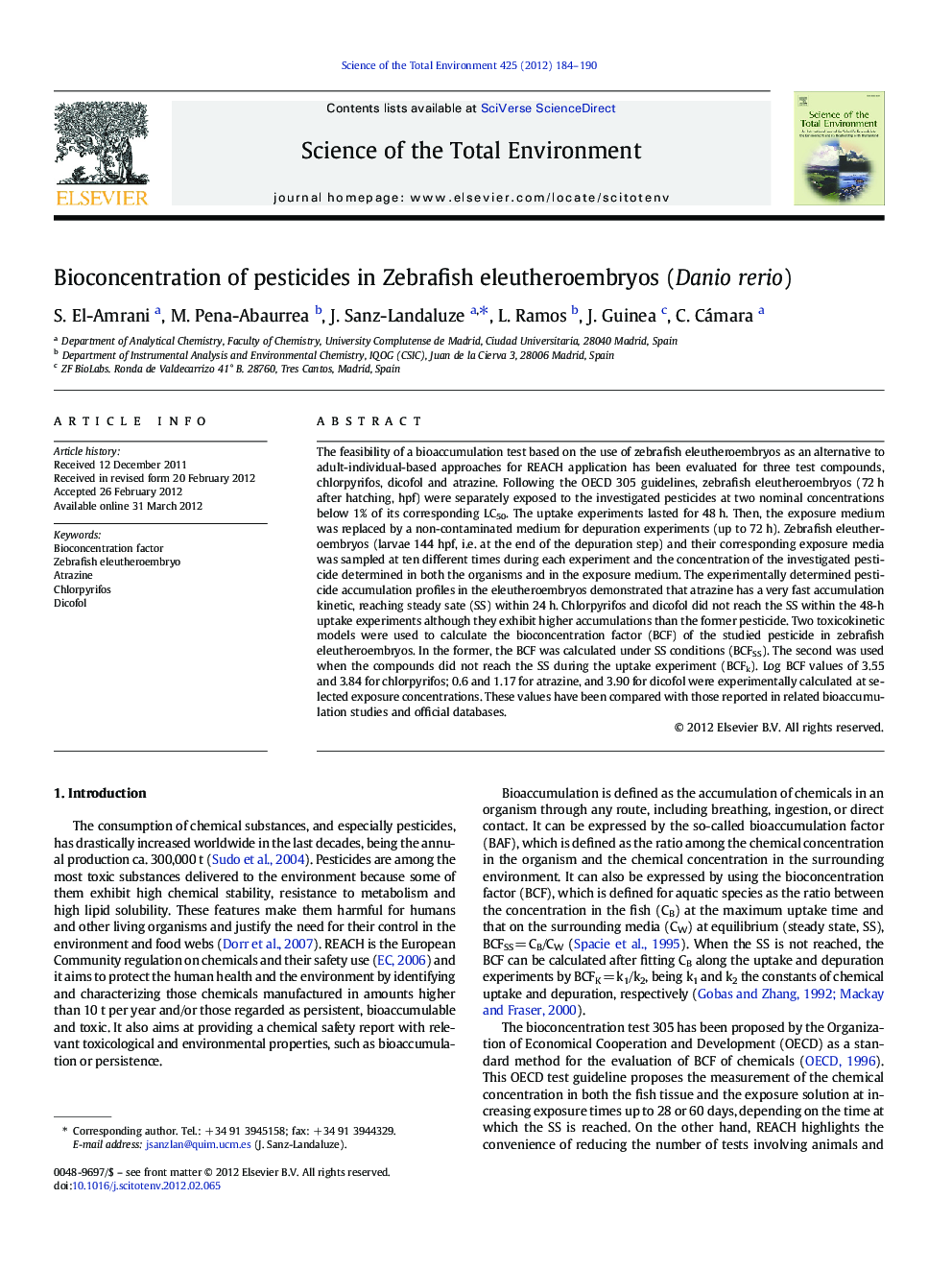| Article ID | Journal | Published Year | Pages | File Type |
|---|---|---|---|---|
| 4429527 | Science of The Total Environment | 2012 | 7 Pages |
The feasibility of a bioaccumulation test based on the use of zebrafish eleutheroembryos as an alternative to adult-individual-based approaches for REACH application has been evaluated for three test compounds, chlorpyrifos, dicofol and atrazine. Following the OECD 305 guidelines, zebrafish eleutheroembryos (72 h after hatching, hpf) were separately exposed to the investigated pesticides at two nominal concentrations below 1% of its corresponding LC50. The uptake experiments lasted for 48 h. Then, the exposure medium was replaced by a non-contaminated medium for depuration experiments (up to 72 h). Zebrafish eleutheroembryos (larvae 144 hpf, i.e. at the end of the depuration step) and their corresponding exposure media was sampled at ten different times during each experiment and the concentration of the investigated pesticide determined in both the organisms and in the exposure medium. The experimentally determined pesticide accumulation profiles in the eleutheroembryos demonstrated that atrazine has a very fast accumulation kinetic, reaching steady sate (SS) within 24 h. Chlorpyrifos and dicofol did not reach the SS within the 48-h uptake experiments although they exhibit higher accumulations than the former pesticide. Two toxicokinetic models were used to calculate the bioconcentration factor (BCF) of the studied pesticide in zebrafish eleutheroembryos. In the former, the BCF was calculated under SS conditions (BCFSS). The second was used when the compounds did not reach the SS during the uptake experiment (BCFk). Log BCF values of 3.55 and 3.84 for chlorpyrifos; 0.6 and 1.17 for atrazine, and 3.90 for dicofol were experimentally calculated at selected exposure concentrations. These values have been compared with those reported in related bioaccumulation studies and official databases.
► Zebrafish eleutheroembryos as a non-animal model to test bioaccumulation. ► High bioaccumulation factors for dicofol and chlorpyrifos, low for atrazine. ► Small sample amounts and low reagents consumption. ► Cost of proposed test ten times lower than the official and much faster.
